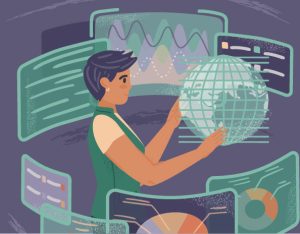The same person has been cutting my hair for the last 10 years. I think she does a pretty good job (my cowlick hasn’t made an appearance in more than a decade). But just as important, I like her. She always greets me enthusiastically when I show up for my appointment. We talk about our families, vacations, and other topics. I moved farther away a few years ago but I’ve never thought about finding someone else closer.
The same thing holds true for my dentist. And my doctor. And our vet. They all do a great job. But what has brought me back over and over for years is how they make me feel when I’m greeted, while I’m there, and when I leave. If any of these people treated me as if I was merely being processed, I would have moved on a long time ago. I’m certainly not alone. Most of us want to be treated well and interact with people that we like—and that seem to like us.
Unfortunately, that isn’t always the candidate’s experience with staffing firms. Staffing professionals usually are very busy, and their jobs certainly can be stressful at times. Combine these two factors and it can become easy to speed through a phone screen with a new applicant. There’s not always time to check in on employees to see how they are doing on assignment. You might feel pressured to get off the phone with that chatty candidate.
But in a time when there has never been more competition for talent, the key to winning the recruiting game is building candidate and employee loyalty. And just as their repeat customer base is critical to a hair stylist or a doctor, so, too, is it to a staffing company. This is obvious to most of us when it comes to clients, but is often overlooked when we think about candidates and employees.
Here are three ways to improve the candidate experience and ultimately create employee and candidate loyalty.
1. Focus on the Candidate Experience.
The more emphasis there is on candidate satisfaction, the better the experience will become. The Net Promoter Score is a great tool not only for measuring how satisfied your candidates and employees are, but also for keeping everyone focused on delivering a great experience. Tracking candidate/employee NPS is the first step. Want to really up the ante? Add NPS as a key metric for employees and offices. Want to take it up even another notch? Make NPS a part of your variable compensation, either as a commission component or a milestone bonus.
and employee loyalty.
2. Identify Crucial Contact Points.
While all interactions are important, some points of candidate contact are even more critical in creating a great experience. First contact after application (including automated email responses), first interview, and first day assignment check-in are just a few critical contact points. What specific messaging should you have for each of these that creates the best candidate experience?
3. Create a Sense of Belonging.
As human beings, we tend to have a need for belonging, and the workplace is no exception. A 2019 study by BetterUp found that a high sense of belonging resulted in a 56% increase in job performance, a 50% drop in turnover risk, and a 75% reduction in sick days. So essentially, if we can create an experience where our candidates and employees feel like they belong, we can reduce no-shows and call-offs, and increase retention and performance. A sense of belonging starts with the first interaction (“we are so happy you have applied with us!”). It continues with the selection and onboarding process, and ultimately as an employee on assignment. Simple things such as recognizing a birthday and work anniversary, celebrating milestones (“congratulations on your first 500 hours!”), and keeping in touch (“just checking in, how are you liking your assignment?”) go a long way to feeling connected to you and your organization.
Success in recruiting, as in most other areas, comes down to small, incremental improvements. Turning a no-show into a call-off, a call-off into being late, being late to finding a way to get there on time, and a quit no-notice to a quit with notice all have incremental benefits that build exponentially over time. And all are a result of increased candidate and employee loyalty.
Tom Erb, CSP, is president of Tallann Resources, a national consulting and training firm specializing in the staffing and recruiting industry. As a consultant, trainer, and speaker, Erb has helped hundreds of companies create and execute sales and recruiting strategies to grow their business. He is the author of Winning the Staffing Sales Game: The Definitive Game Plan for Sales Success in the Staffing Industry. Learn more at tallannresources.com. Follow him on Twitter @TomErb_Tallann.
Send feedback on this article to success@americanstaffing.net. Engage with ASA on social media—go to americanstaffing.net/social.


